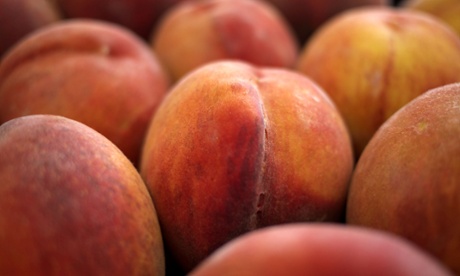
Ever worried that your vagina doesn’t smell like soft fruit? Me neither. Yet last week, in a spectacularly unpopular attempt at foof-commodification, two Silicone Valley startup bros appeared to unveil plans for a new probiotic supplement that would enable women to biohack their nether regions, leaving them smelling of peaches. The product would act as an anti-microbial, with the scent serving as an indicator that it was working effectively to protect against problems such as yeast infections, said Gilad Gome, one of the men pitching the product at the DEMO tech conference. It’s an uncomfortable proposition that caused outrage online. Especially as the pair’s other fragrant collaboration is a probiotic that makes pet dung smell like bananas.
“All your smells are not human. They’re produced by the creatures that live on you,” said co-pitcher Austen Heinz, CEO of Cambrian Genomics. He added: “We think it’s a fundamental human right to … personalise it.”
Science has long been misappropriated in order to sell products, particularly those aimed at women. Some products have used vagina-guilt to sell totally unrelated products: “We all perspire up to 2 to 3 pints a day, scientists say,” claimed one 1920s advert for Lux soap flakes. “Undies absorb odour. You don’t notice it, but others do.”
Other products however, have adopted an even more direct approach – if eau-de-peche sounds a little fanciful, then how about smelling like toilet water, literally? During the first half of the 20th century, douching – AKA the rinsing out of the vaginal cavity – was a popular method of treating infection, deodorising and even used as a contraceptive (it is not generally recommended by medical professionals now as it can upset the sensitive bacterial balance of the genitals). The most popular douche brand in the US was Lysol, an antiseptic disinfectant advertised both as a household germicide for use in toilet bowls and a feminine hygiene product. Until 1953 it also contained cresol, a toxic methylphenol that can cause inflammation to the skin and burning. Use of the product killed five people and resulted in 193 cases of poisoning before 1911. Yet, it was still marketed as safe, employing aggressive ad campaigns that implied that, without it, women were doomed to a life of loneliness with a distant husband. One poster entitled “Love-quiz … For married folks only” shows a forlorn wife whose man is about to walk out of the door, and reads: “Why does she spend her evenings alone?” before finishing with the solemn advice to: “Always use Lysol.”
While companies are unlikely to get away with claiming that a lack of internal bleaching will render a woman forever alone in the 21st century, we’re still not free of unnecessary vaj-products. My New Pink Button, for example, the feminine dye for graying vulvas that comes in four shades and brings a whole new meaning to the phrase “having the painters in”.
Following the backlash and subsequent withdrawal of funding from some Cambrian Genomics investors, Heinz admitted his pitch had been incorrect. Pitching partner Gilad Gome – who had spoken before of hacking microbiome to make vaginas “smell like roses and taste like diet cola” – was in fact not involved in the project and the founder of Sweet Peach Probiotics was actually previously unmentioned “ultrafeminist”, Audrey Hutchinson. The importance of scent in the product, she said, was grossly exaggerated and it really was intended for the much more useful task of curing thrush.
Yet until now, who’d considered that personalising fanny-cologne was even a possibility? It seems as far-fetched and pointless as wishing for tomato-flavoured eyeballs. But it could well be a hint as to what to expect from feminine hygiene in the future – a healthy dose of biotech.

